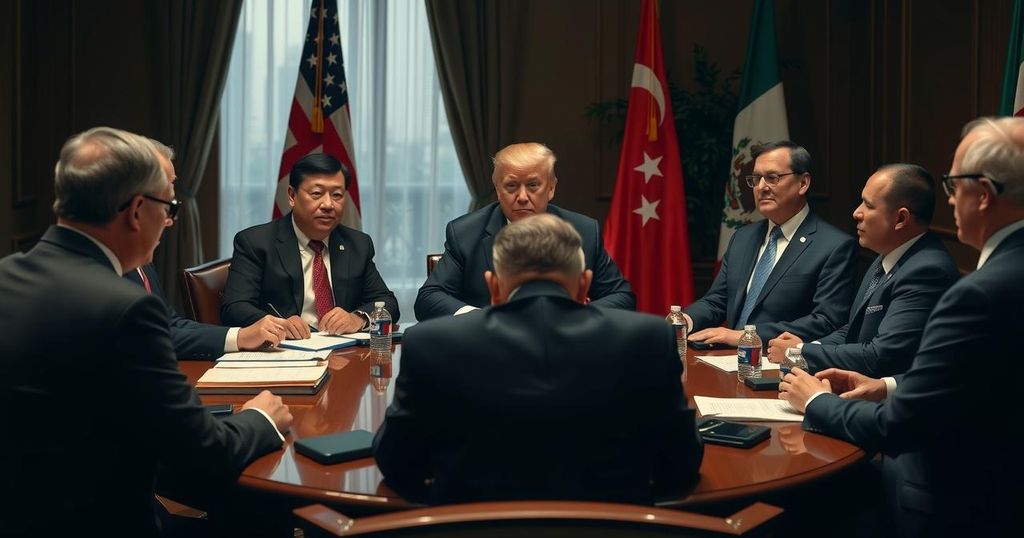Donald Trump’s Proposed Tariffs on Major Trading Partners: An Overview
President-elect Donald Trump plans to impose considerable tariffs on Canada, Mexico, and China starting from his first day in office. Aimed at combating illegal immigration and drug trafficking, Trump has proposed a 25 percent tariff on goods from Mexico and Canada, along with a 10 percent tariff on Chinese imports. This announcement has elicited varied reactions from the affected nations and has resulted in immediate currency fluctuations, with potential long-term implications for U.S. economies and global trade.
In recent announcements, President-elect Donald Trump has pledged to implement significant tariffs on the United States’ largest trading partners, namely Canada, Mexico, and China, once he assumes office. These tariffs are framed as a response to the continued influx of illegal drugs and undocumented migrants into the U.S. Trump specifically mentioned plans for a 25 percent tariff on imports from Canada and Mexico, along with an additional 10 percent on Chinese goods, aimed at compelling these nations to address these pressing issues.
During his tenure, Trump previously adopted similar trade measures against China, claiming unfair practices, and now appears to be expanding this strategy. Notably, he views the proposed tariffs as a means to negotiate better agreements with these countries, particularly concerning border security and drug flow.
The initial reactions from Canada, Mexico, and China have been mixed, with Canadian officials emphasizing the importance of their trade relationship with the U.S. In contrast, Ontario’s Premier has warned that the tariffs could lead to significant job losses in both nations. Moreover, China has expressed concern over the potential for a trade war, emphasizing that mutual cooperation is beneficial.
In response to the announcement, financial markets exhibited volatility, with currencies such as the Canadian dollar and the Mexican peso declining against the U.S. dollar. Analysts speculate that the tariffs will escalate costs for companies based in these nations, thereby impacting U.S. consumers as well. In the long term, these measures may contribute to inflationary pressures in the U.S. and disrupt global trade patterns.
Several experts suggest that Trump’s threats may signal his intentions to renegotiate the United States-Mexico-Canada Agreement (USMCA), which replaced the North American Free Trade Agreement. This strategy may ultimately undermine free trade between the U.S. and its neighbors, impacting a broad range of goods beyond those related to drugs and immigration.
The discussion regarding President-elect Donald Trump’s proposed tariffs centers around his commitment to address the issues of illegal immigration and drug smuggling through economic measures. Historically, Trump has emphasized the significance of trade imbalances and has previously employed tariffs primarily against China. However, in his latest announcements, he extends these punitive measures to include Canada and Mexico, leveraging the urgency of border security and drug control as the rationale for such tariffs. This approach has implications for the larger global trading environment, particularly with the U.S. being one of the largest importers from these nations.
In conclusion, President-elect Donald Trump’s plans to impose tariffs on Canada, Mexico, and China represent a strategic effort to leverage economic pressure to combat drug trafficking and unauthorized immigration. While aiming to rectify trade deficits and reshape trade agreements, these proposed tariffs may ultimately contribute to economic consequences both locally and globally, sparking concerns from trading partners and analysts regarding their long-term effects on trade relations and market stability.
Original Source: www.aljazeera.com




Post Comment